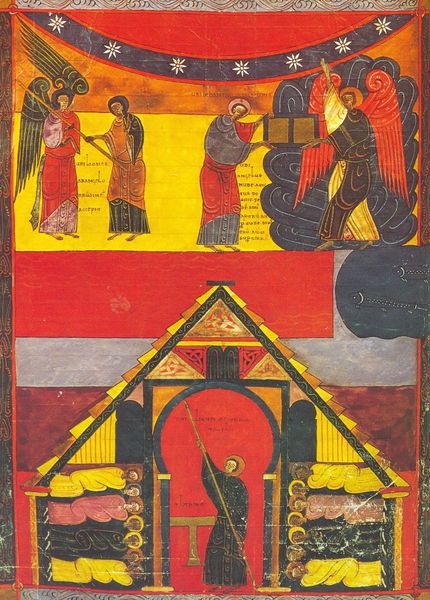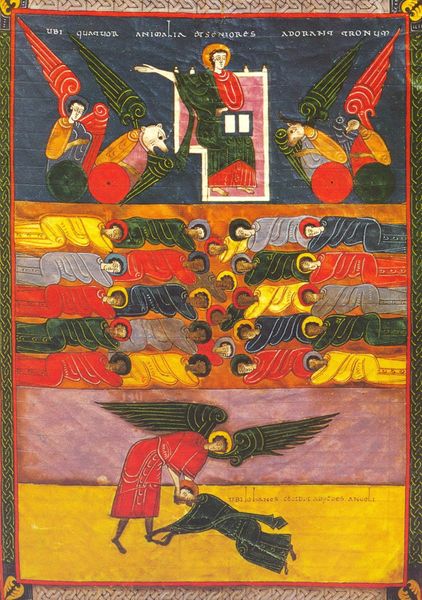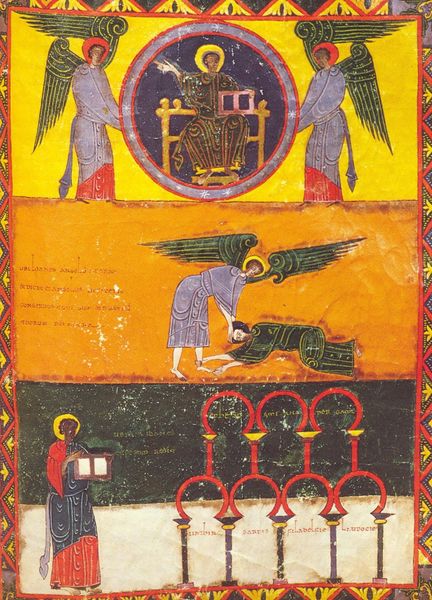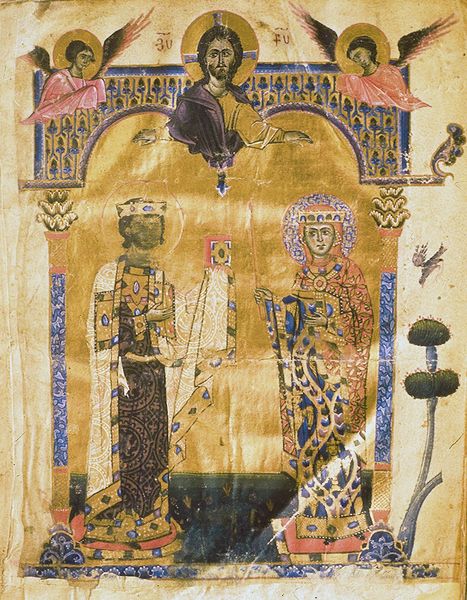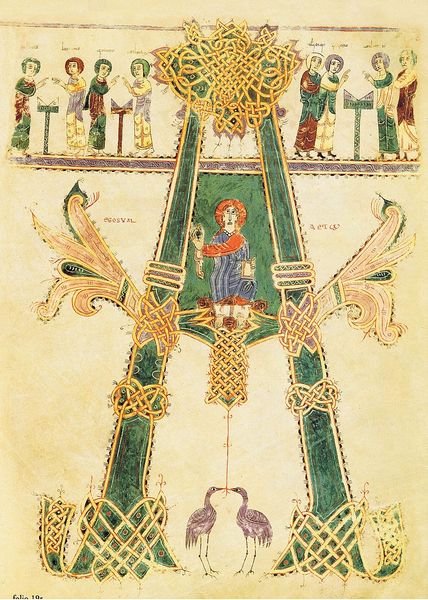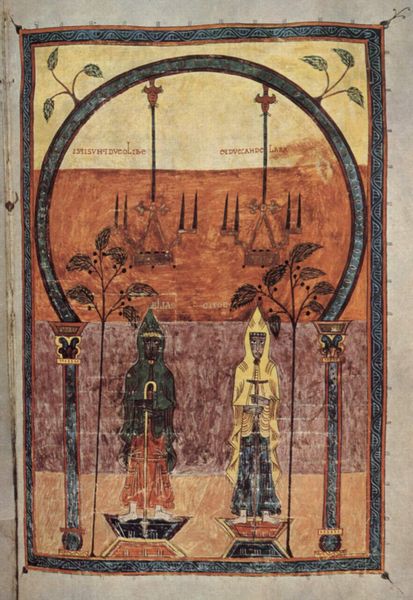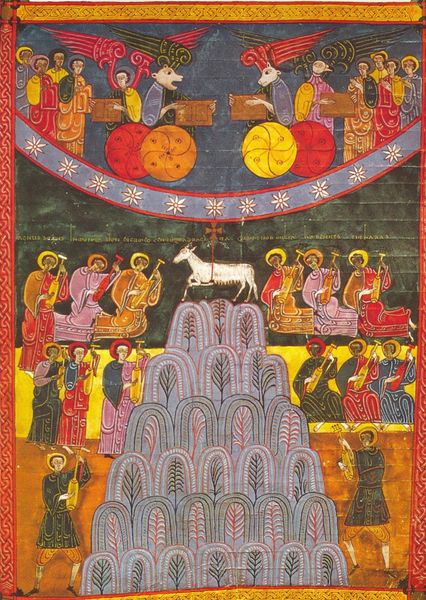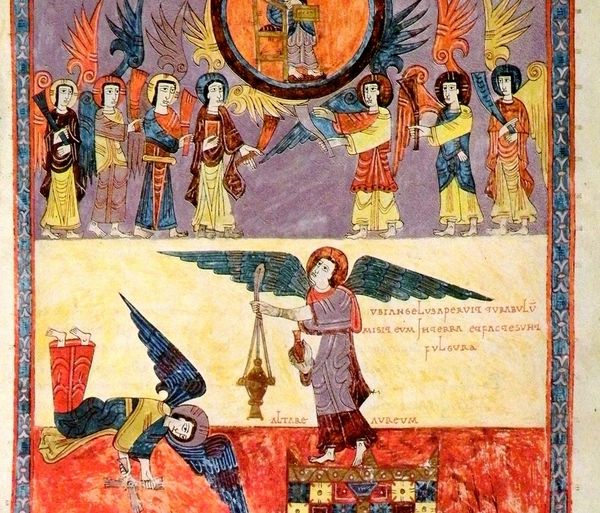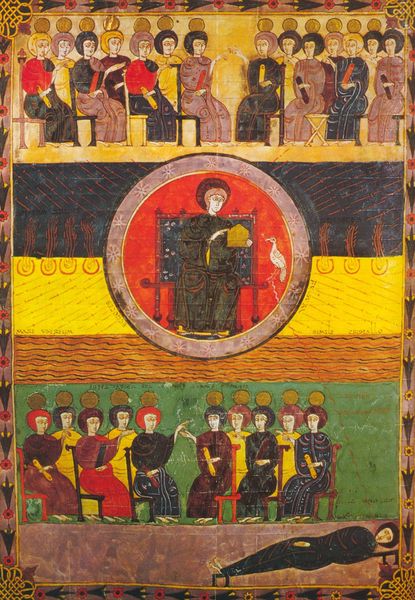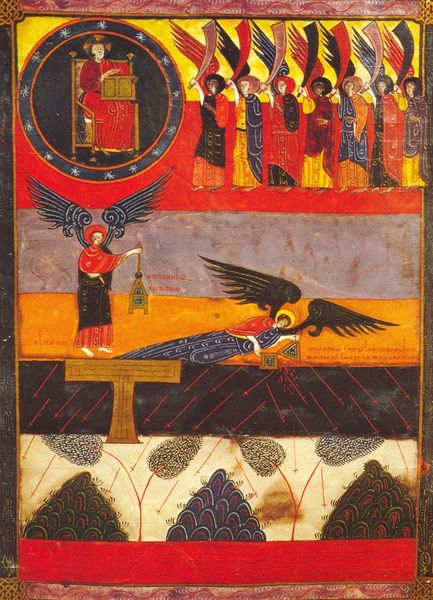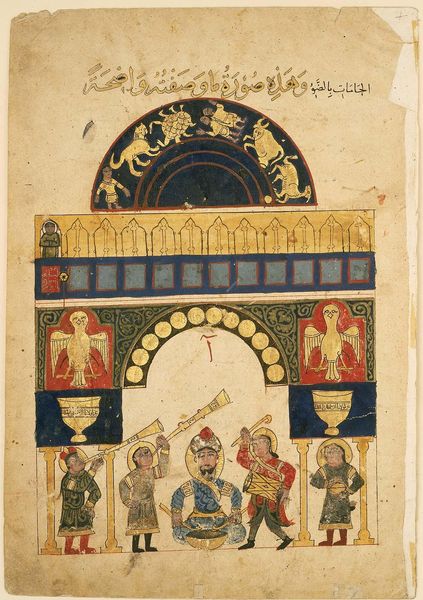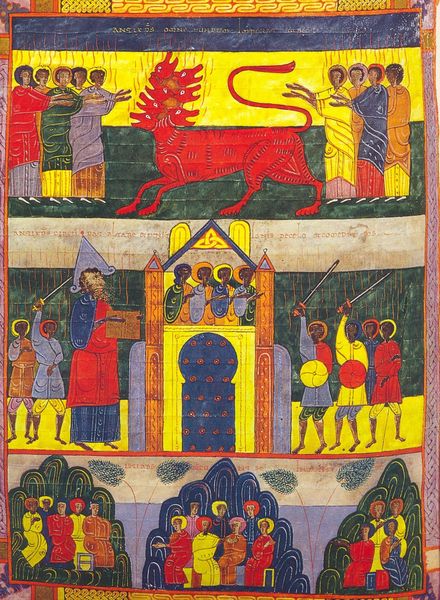
tempera, painting, ink
#
portrait
#
byzantine-art
#
medieval
#
narrative-art
#
tempera
#
painting
#
stain glass
#
figuration
#
handmade artwork painting
#
ink
#
watercolour illustration
#
miniature
Copyright: Public domain
Facundus painted this image of John the Evangelist in the 11th century, where symbolic language is rendered with striking clarity. Above, the eagle, a symbol of John's lofty spiritual insights, clutches a book, representing his Gospel. Two figures below hold a book between them, perhaps alluding to the text being passed down or interpreted. The motif of the eagle is ancient, linked to pagan gods and Roman emperors, symbolizing power and divine authority. It resurfaces in Christian iconography to represent John’s elevated vision. This appropriation and adaptation reveal how symbols carry layers of meaning, reflecting humanity’s evolving relationship with the sacred. Consider also the act of bestowing of the book, a gesture pregnant with symbolic power. These symbols evoke a sense of timelessness. They suggest a continuous dialogue across millennia, resonating with our collective memory and engaging our subconscious on a profound level.
Comments
No comments
Be the first to comment and join the conversation on the ultimate creative platform.

